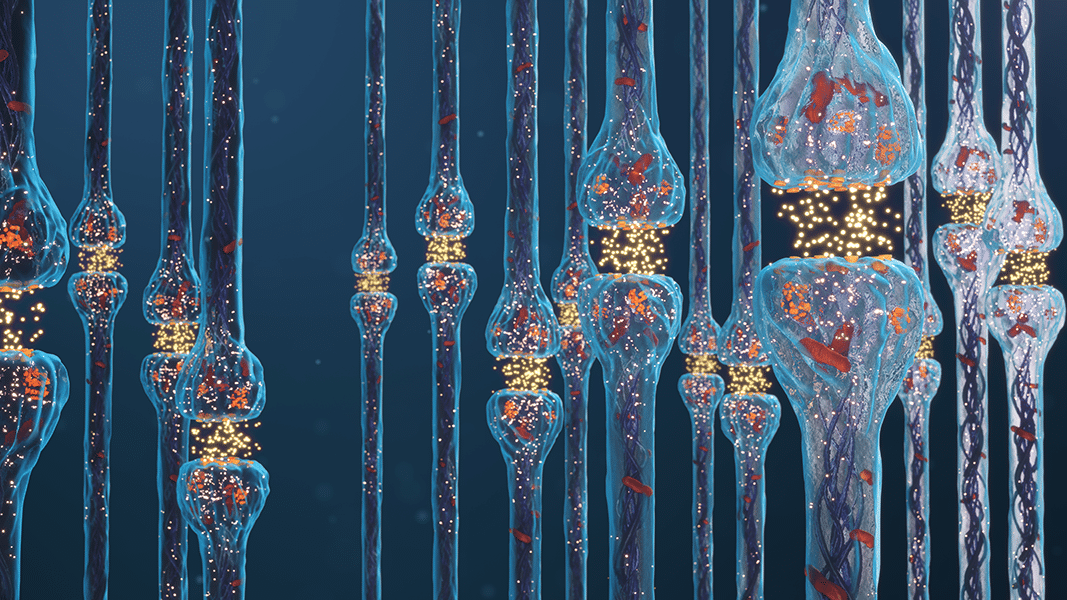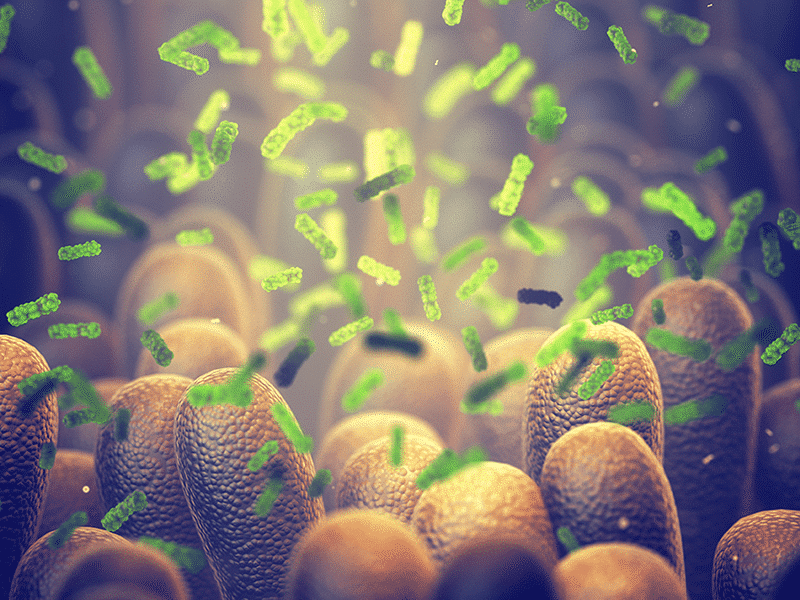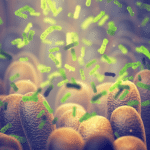Medical scientists have caught on to the fact that cannabinoids help fight unwanted inflammation that contributes to many diseases. But the next anti-inflammatory wonder drug could come from an even more unexpected source: psychedelics.
A team at the LSU Health Sciences Center in New Orleans is now working to refine one of the most potent anti-inflammatory molecules known to science, a synthetic psychedelic similar to LSD called DOI (2,5-Dimethoxy-4-iodoamphetamine) that’s widely used for the study of serotonin receptors in the brain.1,2
LSU researchers have shown that DOI is highly effective at preventing and treating widespread inflammation in mice.3,4 Led by professor of pharmacology Charles Nichols in concert with life science company Eleusis, where Nichols is scientific founder and director of molecular pharmacology, the team’s current work revolves around reducing the behavioral effects of DOI, which are reported by recreational users to include an even longer trip than LSD of up to 30 hours, with aftereffects that can last for days.5,6
Nichols said he has fashioned a variant of DOI, code-named ELE-02 by the company, that produces the same anti-inflammatory effect but two-thirds less behavioral effect. ELE-02 should be entering clinical trials in the form of an eyedropper for treating ocular inflammation within the next year, he said.
“Even though we don’t expect the amounts of drug to have any behavioral effects, giving it to the eye is going to reduce the exposure to the brain, so that will further minimize any risk of somebody tripping if they are giving themselves some eyedrop with our drug in it,” Nichols said.
5-HT2A Receptor Activation
Nichols and Eleusis are in the process of developing third- and fourth-generation psychedelic-derived anti-inflammatories with even less behavioral effect than ELE-02 that could eventually be sold, likely in pill form, for the treatment of systemic inflammation and conditions like arthritis and asthma.
Such molecules would be considered standard pharmaceuticals rather than psychedelics, even though they are derived from DOI and target the same cell receptor in the brain – Serotonin 5-HT2A – that produces hallucinogenic effects.
Interestingly, the behavioral, neuroplastogenic, and anti-inflammatory properties of psychedelic drugs all appear to stem from this single receptor, a subject of growing interest within the neuroscience field. The difference is that slightly different molecules, perhaps by as little as a single atom, can exert unique downstream effects by recruiting different enzymes to the cell.
“When you activate [5-HT2A], it signals to the inside of the cell that it’s been activated with a ligand, and that recruits probably a dozen or so, if not more, different enzymes, to do different things to the cell to change its physiology,” he explained. “And what we’ve shown is that the two major pathways that have been linked to behavioral changes do not correlate with the anti-inflammatory ability.”
For example, DOI has both strong behavioral and anti-inflammatory effects. ELE-02 has strong anti-inflammatory but modest behavioral effects. LSD is an extremely potent psychedelic but only partially effective as an anti-inflammatory, at least compared to DOI and psilocin, a byproduct of psilocybin.
Meanwhile, the endogenous hallucinogen N, N-dimethyltryptamine (DMT), another “classic” psychedelic that activates the 5-HT2A receptor, produces profound subjective effects yet appears to have no efficacy as an anti-inflammatory.7 And the neurotransmitter serotonin, which binds to 15 different 5-HT receptor subtypes, produces no hallucinogenic effects and actually promotes inflammation.
In their search for the perfect anti-inflammatory drug, Nichols and his colleagues are working to continue isolating anti-inflammatory pathways from behavioral pathways, then tune the latter down or all the way out by further modifying the composition and configuration of the original DOI molecule.
“The goal is to have a non-psychedelic drug that somebody could take that would activate the 5-HT2A receptor to treat something like arthritis,” Nichols said. “Right now it’s really in the early stages of that, we’re just trying to understand mechanisms. Once we identify what the enzyme is that we’re recruiting to the receptor, that’s going to help us better design drugs.”
LSD for Alzheimer’s
Nichols and Eleusis are also engaged in other research projects involving classic psychedelics. One is centered on using psilocybin to treat depression, a condition that (like addiction and post-traumatic stress disorder) is associated with inflammation.
Additionally, the company is investigating the use of low doses of LSD to treat Alzheimer’s Disease. It recently completed a successful Phase 1 trial of safety and tolerability in 48 older healthy volunteers.8
Scientists believe that neuroinflammation plays a role in Alzheimer’s.9 But LSD holds promise as a treatment for the disease because of much more than just its anti-inflammatory effect, Nichols said.
“LSD targets nearly all serotonin receptors, and dopamine receptors, among others, for activation,” he said. “Activation of several of these receptors have been shown by us and others using different chemicals individually to have benefits such as enhancing memory, maintaining cell health … and reducing stress-related markers. We think that these multiple positive effects from several different receptors may act synergistically together to be able to slow the neurodegeneration and cognitive symptoms of Alzheimer’s Disease.”
Although LSD would be administered at sub-hallucinogenic doses to Alzheimer’s patients, its potential psychoactivity could be construed as a safety risk by the FDA, Nichols acknowledged. That’s less of a concern with ELE-02, and shouldn’t be an issue with subsequent generations of 5-HT2A anti-inflammatories possessing low or no behavioral activity that are now being developed in Nichols’ lab.
“With anti-inflammatories…it’s much more of a traditional pathway,” Nichols said. “We could go to the FDA and show that there’s no adverse behavioral effects, we have efficacy, we have safety. For the new molecules that we’re making, they’re not scheduled [by the Drug Enforcement Administration]. At that point the FDA will decide, well then what do we do with it? Let’s just make it Schedule 4 [for prescription drugs with low potential for abuse and low risk of dependence], and now you’ve got a new anti-inflammatory on the market.”
Nate Seltenrich, Project CBD contributing writer, is the author of the column Bridging the Gap. An independent science journalist based in the San Francisco Bay Area, he covers a wide range of subjects, including environmental health, neuroscience, and pharmacology. © Copyright, Project CBD. May not be reprinted without permission.
Footnotes
- Serotonin 5-Hydroxytryptamine2A Receptor Activation Suppresses Tumor Necrosis Factor-Induced Inflammation with Extraordinary Potency (2008) https://jpet.aspetjournals.org/content/327/2/316
- Structure−Activity Relationship Analysis of Psychedelics in a Rat Model of Asthma Reveals the Anti-Inflammatory Pharmacophore (2020) https://pubs.acs.org/doi/10.1021/acsptsci.0c00063
- Serotonin 5-HT2 receptor activation prevents allergic asthma in a mouse model (2014) https://www.ncbi.nlm.nih.gov/pmc/articles/PMC4338939/
- 5-HT2 Receptor Activation Alleviates Airway Inflammation and Structural Remodeling in a Chronic Mouse Asthma Model (2019) https://pubmed.ncbi.nlm.nih.gov/31626791/
- https://thedrugclassroom.com/video/doi/
- https://psychonautwiki.org/wiki/DOI
- Structure−Activity Relationship Analysis of Psychedelics in a Rat Model of Asthma Reveals the Anti-Inflflammatory Pharmacophore (2020) https://pubs.acs.org/doi/10.1021/acsptsci.0c00063
- Safety, tolerability, pharmacokinetics, and pharmacodynamics of low dose lysergic acid diethylamide (LSD) in healthy older volunteers (2019) https://pubmed.ncbi.nlm.nih.gov/31853557/
- Psychedelics as a Treatment for Alzheimer’s Disease Dementia (2020) https://www.frontiersin.org/articles/10.3389/fnsyn.2020.00034/full
Recommended Readings
Psychedelics for OCD
Why is psilocybin helpful for treating mood disorders? Is it the drug alone acting on the brain, or is it the subjective experience?
CBD & the Psychedelic Receptor
CBD and LSD bind to the same serotonin receptor, which mediates psychedelic altered states.
Psychedelics, Endocannabinoids & Gut Microbiota
A deep science foray into LSD’s impact on the endocannabinoid system and the microbiome.










